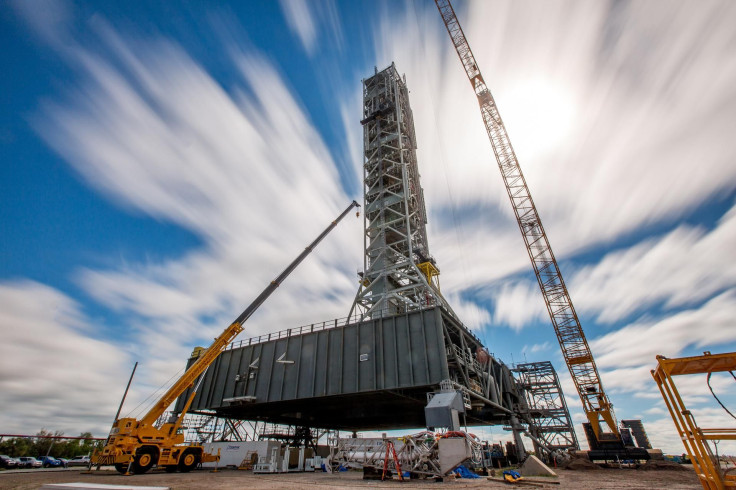NASA's Mobile Launcher For Its Massive Deep-Space Rocket Is Tilted

NASA has a huge rocket in the works called the Space Launch System that will be used in the future to launch up to four astronauts at a time to deep space in the Orion craft. These missions will be some of the first to get astronauts to deep space if they’re successful. But one part of the launch sequence isn’t quite going according to plan. The Mobile Launcher that NASA plans to use to launch the SLS leaning a bit, NASASpaceflight.com reported.
Updates to the launcher began in 2015 to adapt to the SLS, Orion and Ground Support Equipment that will all be used for the launches. It was originally built for the launches of the Ares I so the upgrades are necessary so it can handle the much larger rockets and systems. The upgrades included reinforcements to the base and tower as well as an enhanced exhaust hole that can direct the exhaust from the larger rocket systems, according to NASA.
The launcher is leaning but structurally sound and doesn’t require any modifications to fix the lean, according to NASASpaceflight.com. The lean though does not require any modifications or moves to mitigate the lean, NASA told NASASpaceflight.com. The launcher is called the mobile launcher for a reason, it moves, meaning it does not stay perfectly still.
Data does not indicate that there is any sort of structural issue with the launcher, rather than the modifications and addition of arms to the tower changed the mass of the structure. The tower and base weighed 10.5 million pounds in 2015 before further work was done to it to modify it for the SLS launch, according to NASA. The structure and its upgrades cost about $1 billion, Popular Mechanics reported. Additionally, things like wind, temperature and vibrations can also lead to the lean of the massive tower, according to NASA.
Just this week NASA tested the SLS. The agency tested the RS-25 engine on the SLS ar 113 percent capacity, according to the Orlando Sentinel. The entire test lasted for 260 seconds but for only 50 of those was the engine operating at 113 percent. The SLS is expected to launch sometime in 2019.
This story has been updated this story to include information about the price and weight of the launcher. Stay with International Business Times for updates on NASA and the SLS.
© Copyright IBTimes 2024. All rights reserved.











